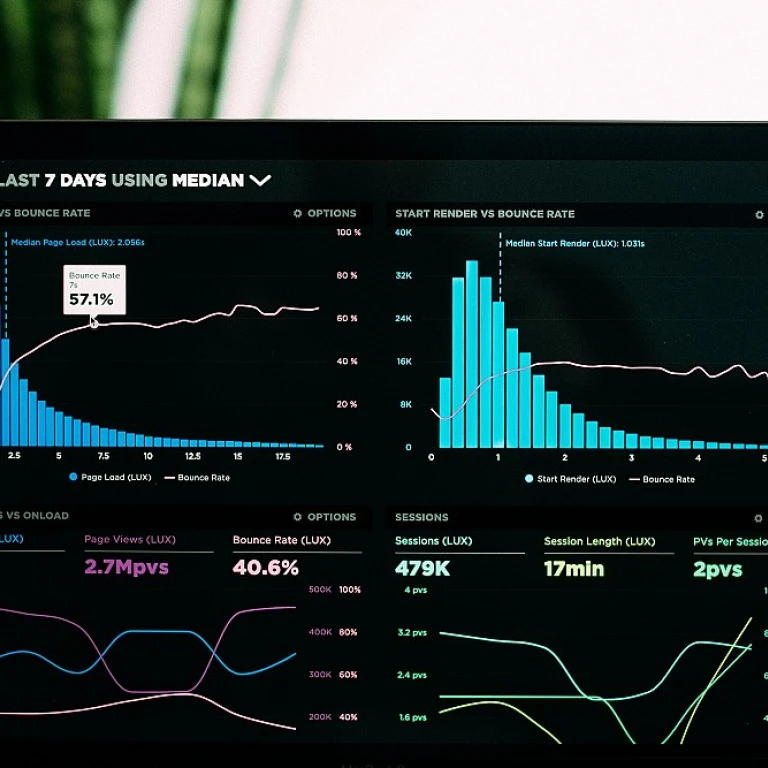Defining Pre-Seed and Seed Funding
Breaking Down the Basics of Early-Stage Funding
Understanding the distinctions between pre-seed and seed funding is crucial for influencers aspiring to grow their digital footprint and expand their business ventures. Both of these early-stage funding rounds are designed to cater to the needs of startups, but they serve different purposes and requirements.
Pre-seed funding marks the beginning of the startup journey. This stage is often characterized by informal fundraising rounds, where the initial capital is raised from personal savings, friends, and family. The focus at this stage is primarily on developing a viable product and establishing a foothold in the market. Influencers looking to expand their brand can benefit from this funding by enabling them to launch new content strategies or develop products that align with their personal brand identity.
In contrast, seed funding involves more formal rounds, typically attracting venture capital and angel investors. This stage supports the transition from concepts to tangible product offerings and business models. The funds raised are used for product development, talent acquisition, and scaling market reach. Seed funding can be pivotal for influencers to transform their growing presence into a full-fledged company, often paving the way for series funding down the line.
For influencers dipping their toes into the business world, navigating these early-stage funding rounds requires diligence and a well-prepared pitch deck. Each stage presents unique challenges and opportunities, from pre-seed's intimate and informal nature to the more structured pursuits of seed funding. By understanding these differences, influencers can better position themselves to leverage available funding resources and take their ventures to new heights.
To explore the intricacies of equity distribution and stakeholder engagement during these funding rounds, influencers can benefit from resources such as
understanding equity waterfall structures, which provide guidance on managing partnerships and financial distributions strategically.
The Impact of Capital on Social Media Influence
When diving into the world of social media influence, the importance of capital cannot be overstated. For burgeoning influencers, securing funding in the early stages can mean the difference between gaining traction and fading into obscurity. Understanding the distinctions between pre-seed and seed funding helps influencers strategize their content and business model effectively.
In the pre-seed stage, influencers are essentially laying the groundwork for their social media presence. Here, the focus is on fleshing out their identity, curating engaging content, and organically growing their audience. This stage often includes personal savings or contributions from friends and family, which help to cover initial expenses as influencers carve their niche in the market.
Transitioning smoothly from the pre-seed to the seed stage involves a strategic evolution. Influencers in the seed stage typically start securing larger capital injections, which commonly include venture capital or angel investor funds. In this stage, influencers can aim to enhance their content quality, expand their reach, or even develop a more structured product offering.
Seed funding plays a crucial role in scaling, allowing influencers to raise their profile and broaden their exposure. With increased funds, influencers can experiment with various content formats, invest in marketing strategies, or venture into collaborative opportunities.
For more precise insights into how funding strategies can evolve, check out this
comprehensive guide on analyzing financial paths for speculative investors.
With a well-planned funding round and judicious allocation, the road to becoming a successful social media influencer can be more navigable, leading to a robust presence and a profitable venture.
Navigating the Pre-Seed Stage as an Influencer
Strategic Planning for Influencers Entering the Pre-Seed
The pre-seed stage is a crucial period in an influencer's journey towards scale. Here, influencers face the challenge of converting their vision into a tangible business concept. It entails navigating the complexities of securing the initial capital required to kickstart their market entry.
As an influencer stepping into the pre-seed stage, it is essential to establish a strong foundation that resonates with potential investors. This requires developing a comprehensive pitch deck that clearly articulates your vision, the value proposition of your product, and the unique elements that differentiate your brand in an ever-competitive market.
- Strategic Market Analysis: Gain a deep understanding of the product market fit. This helps in convincing angel investors or friends and family about the potential growth trajectory of your startup.
- Creating a Solid Business Model: Laying out a detailed business plan encompassing how your brand will generate revenue, manage costs, and scale effectively.
- Building a Network: Engaging with peers and mentors who can provide guidance and open doors to potential funds. Consider the role of early-stage funding sources, such as private equity firms, to extend your reach among the investor community.
During this early stage, influencers might explore various strategies for capital acquisition—whether it's through personal savings, assistance from close acquaintances, or tapping into venture capital.
Taking lessons from case studies of other startups can significantly aid in this process. Observing how companies have successfully navigated their pre-seed to seed transition can offer insights into refining strategies for your funding round.
For a deeper dive into these strategies and how they intertwine with social media influence, feel free to explore insights on
the role of venture capital in social media influence.
Transitioning from Pre-Seed to Seed Funding
Progressing to Seed Funding: Paving the Path
Transitioning from the pre-seed stage to seed funding marks a significant milestone for influencers aiming to amplify their ventures. In the pre-seed phase, influencers typically rely on modest capital, often sourced from personal savings, friends, and family. As they move toward seed funding, the financial landscape broadens, introducing opportunities from angel investors and venture capital firms.
For influencers, this transition necessitates a polished pitch deck and a refined product-market fit. A compelling narrative that articulates the business potential and captures the attention of potential investors can be pivotal. Demonstrating tangible proof of concept and early traction in the market through social media metrics or product engagement data can be a strong leverage point.
The seed round is the first formal stage where substantial funding is pursued. It helps in scaling operations, developing products, enhancing marketing strategies, and effectively capturing a larger market share. During this phase, influencers should be prepared to answer critical questions about their business model, revenue streams, and market differentiation.
Understanding the intricacies of the seed stage is essential. Influencers must navigate the complexities of diverse funding sources, each with distinct expectations and contributions. This stage often involves negotiations over equity stakes and the strategic involvement of investors who bring more than just financial support.
As influencers transition into the seed funding stage, they should engage proactively with the startup ecosystem. Networking with other founders, attending pitch sessions, and staying informed about the dynamics of capital markets are beneficial strategies. Keeping abreast of industry developments provides insights into securing future financing rounds, including series funding.
In essence, the journey from pre-seed to seed funding is a transformative phase for influencers, laying the groundwork for sustained growth and success in the competitive realm of social media influence.
Challenges Faced by Influencers in Seed Funding
Navigating Obstacles on the Seed Stage Journey
Influencers transitioning from pre-seed to seed funding face a myriad of challenges. Entering this new startup phase can unlock potential growth, but it also requires navigating a more complex funding market. Seed funding often entails rigorous pitch deck presentations and engaging with a broader spectrum of investors. The seed round typically demands influencers to convey a well-articulated business plan that highlights the 'product-market fit' and the potential return on investment (ROI) for venture capitalists.
One significant challenge is securing sufficient seed capital to turn an influencer's growing influence into a sustainable business. This stage often requires influencers to raise funds that support product development, market entry, and potentially, a series of funding rounds to maintain momentum. These funding pre-conditions can be daunting, given that investors are keenly attuned to the viability and scalability of the influencer's offering.
Moreover, influencers must be prepared to pivot when market dynamics shift. Seed stage investments often necessitate adapting strategies to meet investor expectations and changing consumer demands. This fluidity requires a keen understanding of business management and the ability to anticipate and address early-stage challenges effectively.
Lastly, the pressure to transition smoothly to subsequent rounds, such as series funding, demands a robust business model and a clear growth trajectory. This transition extends beyond merely raising money—it's about proving the influencer's preparedness for long-term success as a credible business entity. As influencers navigate seed funding, fostering relationships with angel investors, private equity partners, and other key stakeholders becomes increasingly paramount.
For those interested in a deeper dive into navigating funding stages in social media influence, exploring related experiences can provide invaluable insights.
Case Studies: Influencers Who Successfully Navigated Funding Stages
Success Stories in Securing Pre-Seed and Seed Funds
The transition from pre-seed to seed funding is a critical hurdle for influencers looking to scale their social media ventures. Several influencers have successfully navigated this complex journey, leveraging their unique strategies and market knowledge.
One notable case involves an influencer who started with a modest pre-seed round, using friends and family financing. This early stage capital was primarily focused on building a viable product and establishing a solid product-market fit. The influencer employed a strategic pitch deck to outline their vision and demonstrate early traction in their niche market.
Once the pre-seed funds were effectively utilized, the influencer transitioned to the seed stage by showcasing measurable growth and business potential to angel investors. The ability to present a clear narrative of market opportunity and product differentiation was crucial in securing seed rounds. This strategic approach not only attracted new investors but also doubled the company's valuation for the series funding.
Another example features an influencer who excelled in community building, attracting a dedicated audience whose engagement directly influenced investor confidence. This influencer's successful series round was achieved by demonstrating both sustained engagement metrics and innovative product offerings.
These case studies underscore the importance of aligning funding strategies with business goals, presenting a compelling narrative, and leveraging social media influence to attract seed funds. By understanding the dynamics of various funding rounds and maintaining investor relations, influencers can significantly enhance their fundraising success.

